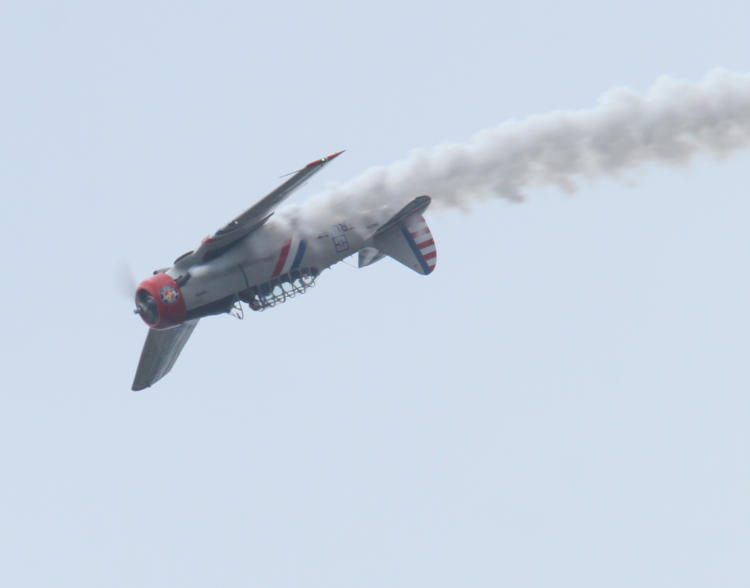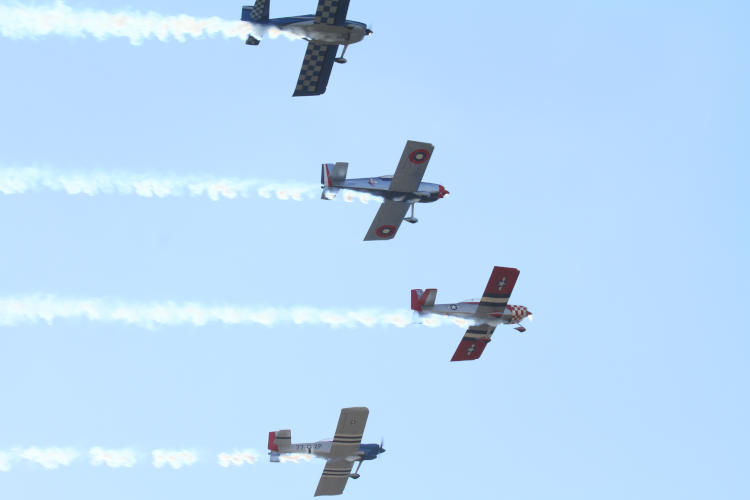
Finally getting around to posting the pics from Skyfest NC this past Saturday, part of the delay being, there really wasn’t a lot to see for this one, which I made worse by leaving early (there was, at least, a helicopter rappelling demo that was scheduled.) Pictured above and below are four members of the Full Throttle Formation Team as they flew overhead. Many of the pilots for the team are veterans, and Skyfest NC was aimed at benefiting veterans, so it was fitting to have this team flying.
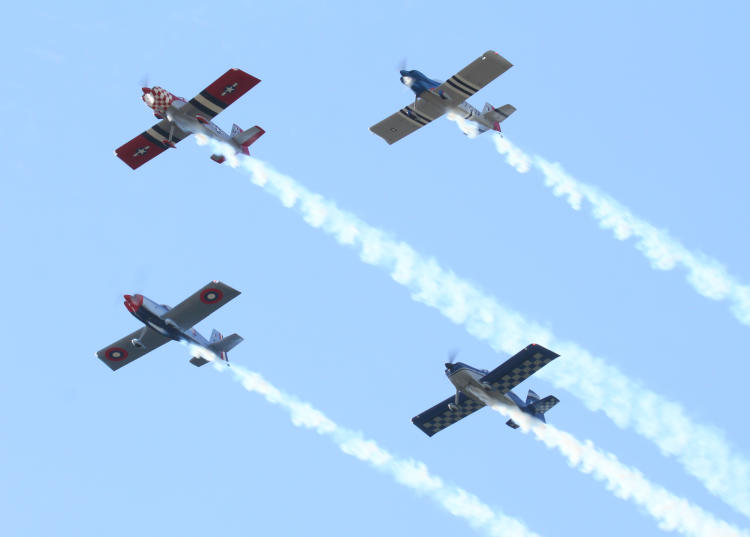
I’m a little unsure of the aircraft used, partially because the website never specifies, but I pulled up a flight radar app during the show and determined that two types of aircraft were in use at the time: Vans RV-4 and Vans RV-8. They’re very similar, but the RV-4 is leaner and better at aerobatics, so I suspect that these are RV-8s for a reason that will soon be apparent. Both are lightweight, inexpensive but high-performance planes, often available as kits, but kitbuilding aircraft is a daunting task and not something that I’d want to tackle.
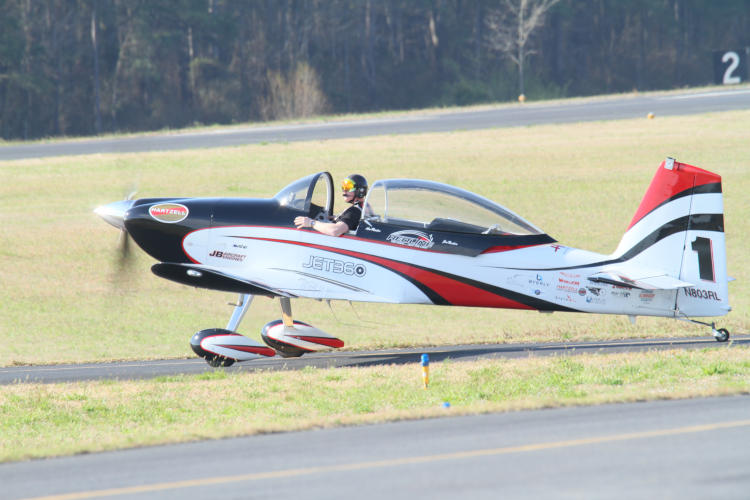
This was the other aircraft that was in the sky when I checked the app, and I’m going to consider this the RV-4, both from the fact that it performed more aerobatics and from that minimal rear seat space (yes, there’s one back there.) Johnston Regional really is built on a wicked slope, which makes takeoffs and landings a special skillset.
[No, I lie like a proper bastard: it’s just me failing to hold the damn camera level, and the frame was too tight to correct in post.]
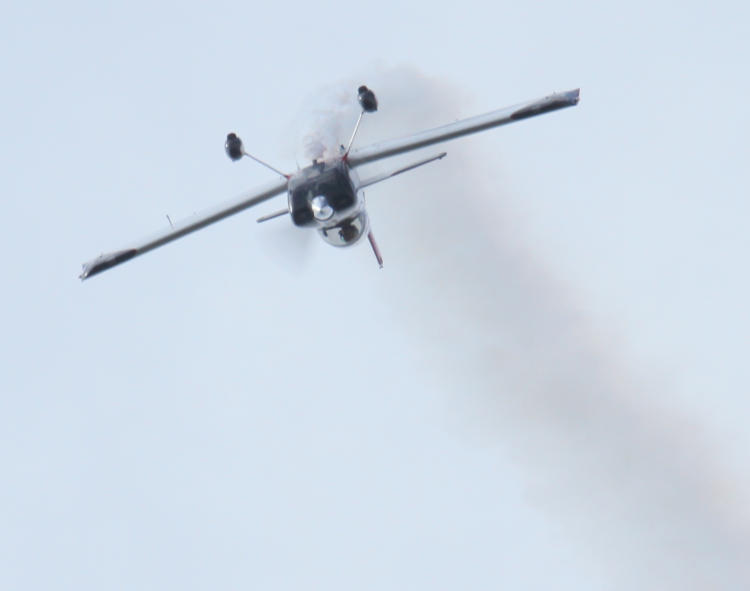
While this frame might still not be perfectly level, I’m not that bad – the plane really is inverted. This individual aircraft performed more aerobatics than the formation team, but Vans aren’t as powerful or dedicated to the pursuit as some Extra or Pitts models, so there were no elaborate spinning, twisting, or high-speed maneuvers for this show. Which also made it considerably quieter – those dedicated aerobatics planes can howl.
There was also a precision skydiving demonstration, the lead-off aerial display, but I neglected to get the name of the performers.
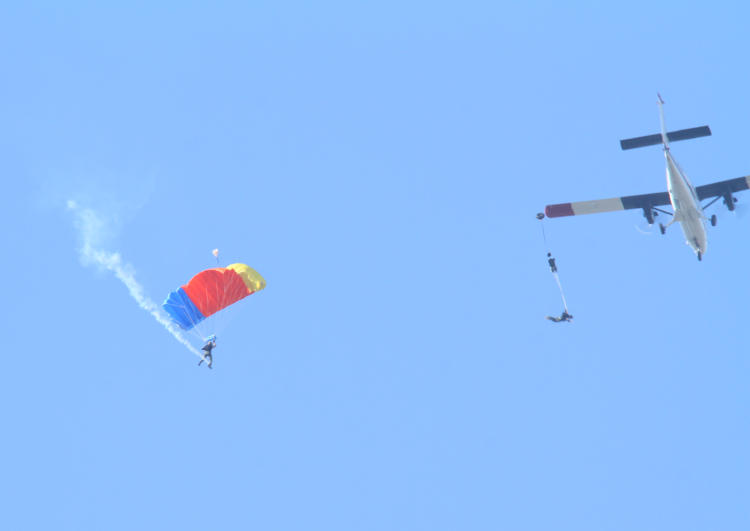
The framing of this isn’t ideal because I (stupidly) wasn’t expecting the second diver. There was a stiff wind from the south, at least 20 knots, so the divers had to exit well south of the airport to be carried back to the landing zone, which they handled well. An attendee tipped me off that the aerial performance box was on the southern expanse of the airport, so I was positioned down there for the best view, while the target area for the skydivers was directly east of the show grounds and I didn’t have the best view of their touchdowns. Plus the sun.
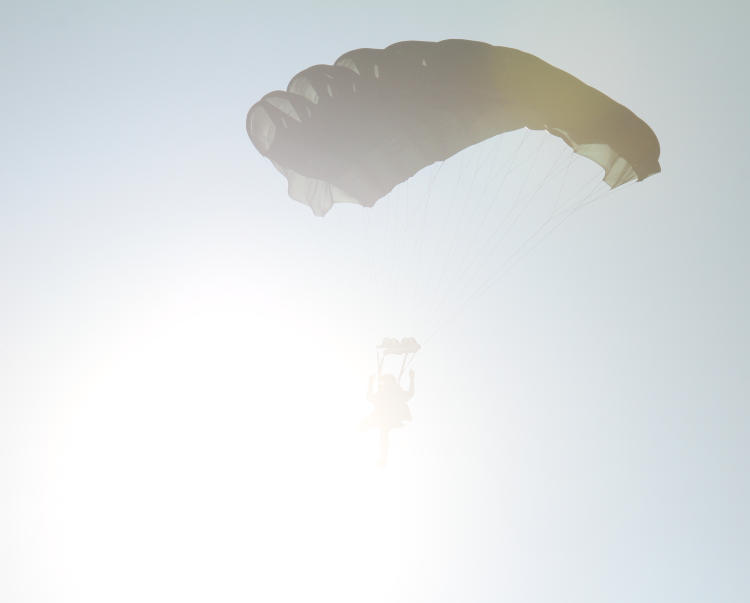
This was really not a well-planned event, and had they published the diagrams or maps, I would have stayed in the parking area, on the far side of the runway, and had much better lighting for the entire show. They also, for reasons unknown, lined up nearly all of the vendors and food carts between the crowd area and the runway and target zones, blocking most of the view and putting the ‘storefronts’ in shadow. I’ll credit them for having parking organized extremely well, though.
Their static aircraft displays were also ridiculously lacking.

This is an Aero L-39 Albatros, which I can only tell you from experience, since no one provided anything at all to explain this jet sitting in the middle of the crowd – no placards, no attendants, no nothing. They even left the canopy cover in place. It is a Czechoslovakian trainer and light fighter that, with the collapse of the Eastern Bloc, came onto the international aircraft market by the dozens, at remarkably low prices, and were bought up by air racers and speculators – it’s easy to find them with air adventure businesses and even fly one, with an instructor of course. Nice sleek little jet – I’ll pick one up with only a few more photo sales…
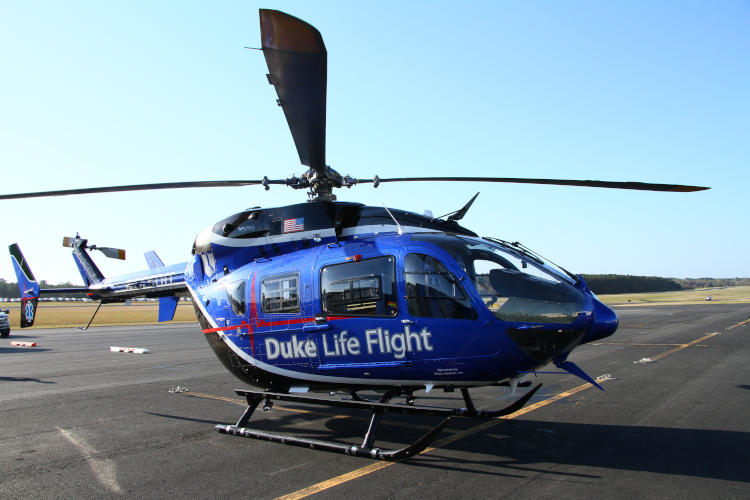
This particular helicopter passes over Walkabout Estates at least three times a week, because we’re not that far from both Duke University Hospitals and UNC Hospitals (it will evac patients to either as the situation warrants.) Short story: this is an Airbus H-145. Much longer story: the registration plate will list it as an MBB BK-117 C2, indicating that it was originally developed by Messerschmidt Bolkow-Blohm from Germany, paired with Kawasaki from Japan, before they were absorbed into Eurocopter, later to be purchased by Airbus. Seriously, keeping up with current model numbers requires effort. Real quick, I’ll point out the two “blades” on the front of the fuselage, top and bottom, and the extended “pointy toes” on the landing skids. These aircraft often operate from accident scenes and thus fly into unprepared landing zones; the blades are cable cutters, just in case someone misses the cables overhead (which are considerably harder to see from above, but also nigh-invisible at night even with powerful lighting,) while the toes help push any cables beneath the skids. Whenever possible, there’s an experienced spotter on the ground to establish a safe zone, but again, at night this is exceptionally tricky.
There was also an Air National Guard UH-72 ‘Lakota’ on display, which is the military designation of the H-145 D2, with an enclosed ‘Fenestron’ tail rotor. Annnnddd that was it, really – the Vought F4U Corsair shown on the website, as well as any other warbirds (with one exception) were completely lacking. No military aircraft at all, save for the Lakota, though the shorter runway at Johnston Regional prevented a lot of such aircraft from arriving. The only other static display of note was this:
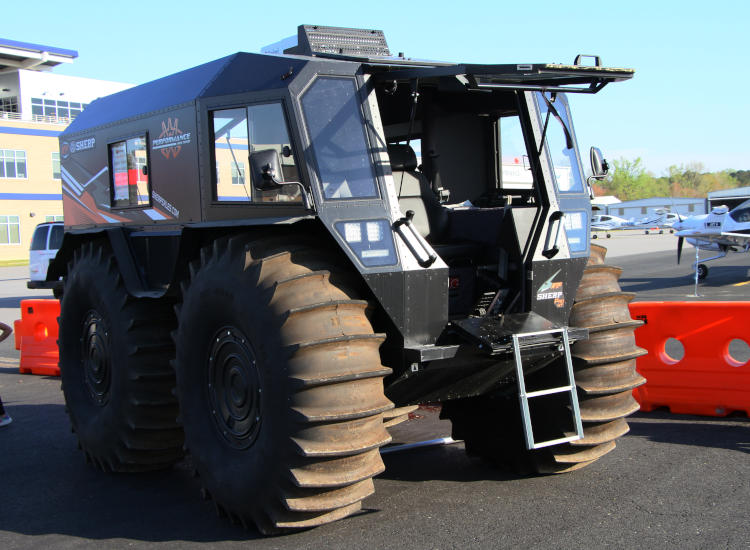
Again, not a damn thing to explain its presence, so we rely on my zooming in on the front panel and typing that into Ecosia. This is an Argo Sherp Pro XT all-terrain vehicle which, you know, I wouldn’t turn down if someone wanted to unload one on me. Granted, the number of places where I could legally and with permission use it are few and far between, but I’d find a few.
And finally, we close with the North American SNJ-4, which is the US Navy designation of a training aircraft, known to the US Army Air Corps as the AT-6 Texan – this was the only warbird to be seen at Skyfest NC. They were produced in vast numbers and have been used countless times since, often repurposed as various WWII combat aircraft for airshows and films. This one did much the same aerial display as the RV-4 above, differing mainly from the sound of the much-more-powerful rotary engine. But unless the organizers do a hell of a lot more for planning and displays, I’ll be skipping this one in future years.
